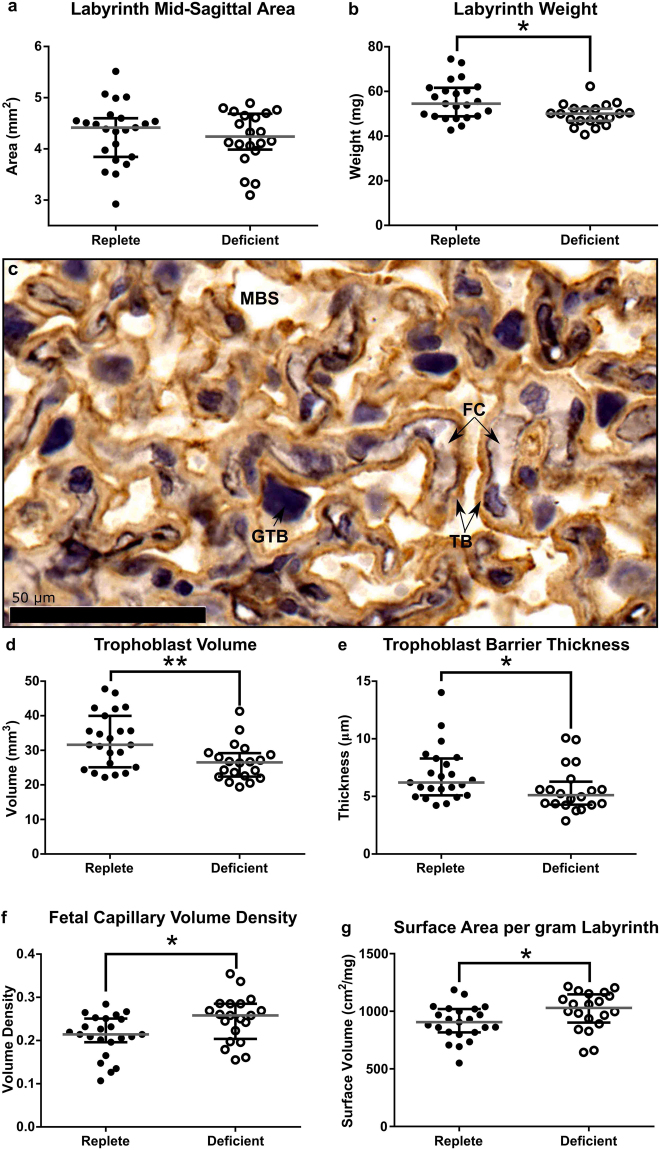Figure 3.
Maternal zinc deficiency during pregnancy resulted in changes to the placental architecture likely to affect fetal growth. Despite no significant different in the labyrinth zone mid-sagittal cross sectional area (a), labyrinth zone weight was reduced in the zinc-deficient placentas at GD18.5 (b). Double labelling immunohistochemistry was used to identify the fetal capillaries (FC), trophoblasts (TB) and maternal blood space (MBS) within the labyrinth zone (c). Analysis revealed decreases in the trophoblast volume (d) as well as trophoblast barrier thickness (e) in the placentas from zinc-deficient dams. An increase in fetal capillary volume density (f) and surface volume (g) was also found. Data are median and interquartile range (n = 23 and 21 placentas from 12 zinc-replete and 11 zinc-deficient dams, respectively). Statistical significance was determined using Mann-Whitney Test on data based on an average litter size of 7.00. *P < 0.05, **P < 0.01. GTB: giant trophoblast cells.

